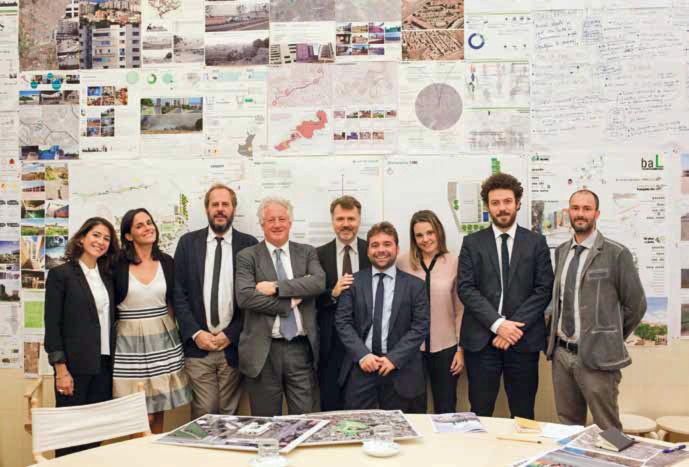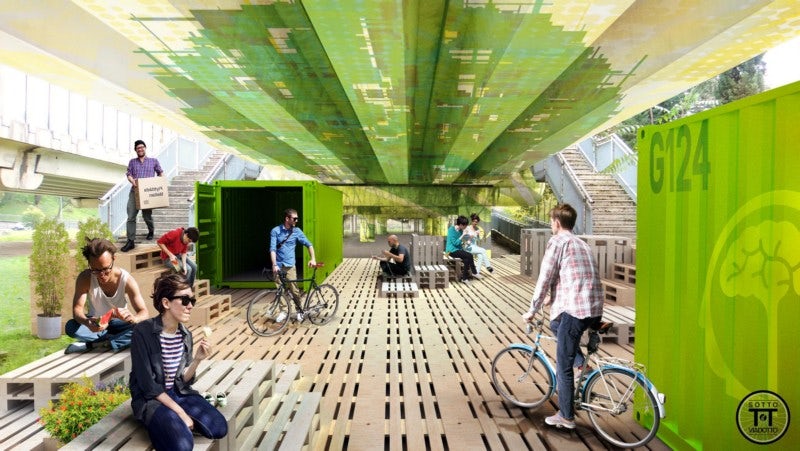“The unhappy city contains a happy city unaware of its own existence,” wrote Italo Calvino in his masterpiece Invisible Cities. Beyond designing the Ecole Normale Supérieure Cachan in Paris and the Columbia University Campus Plan in New York City, architect Renzo Piano has spent last year looking for fragments of happy cities around Italian suburbs with a team of six young architects.

In August 2013, the 77-year-old architect was named “Senator for life” by Giorgio Napolitano, the President of Italy. Reinforcing the role of political engagement in society, Piano decided to invest his funds as politician to develop a plan to rescue periferies, or the suburban areas of major cities:
“I was wondering: Me, an architect who reads about politics on the newspapers, what could I do for my Country? […] I said to myself: architect is a political profession, after all the word politics is coming from polis, the city […] So my answer was: what I am going to do is a long-term project, as my role of senator for life will be […] I guess that the big project for my Country is the one that include periphery: the city is our future, the city that will be, the one that we will bequeath to our sons.”

Still from Gomorrah by Matteo Garrone
The most famous and disconsolate glimpse of Italian periphery has been portrayed in Matteo Garrone’s 2008 film Gomorrah, based on the book by Roberto Saviano and shot in Le Vele di Scampia, a decaying affordable housing complex in Naples designed in the middle ’60s. Depicted as a desolate cityscape and fertile ground for criminality and social exclusion, the periphery is often characterized as a seedy fringe. Piano and his team are trying to design a brighter future for this neglected section of city. Named for the number of Piano’s office in Palazzo Giustiniani, the G124 project has transformed the administrative building on the the side of the Pantheon, into an architecture workshop.

What has the team accomplished in the first year of running the venture? According with Eloisa Susanna, an architect on the team, the first step to revitalizing the suburbs is to deal with the community and local associations. “It’s important guarantee a local shared design, operating focused on interventions that could work to relaunch local economy through the involvement of inhabitants, in a transformation process that stimulates the sense of belonging. From this point of view G124 project could be relevant in every contest, even out of Italy.”

In fact, many cities are the world face the failure of peripheries, from the Paris’s banlieues to the forthcoming affordable housing program in Beijing (where China’s Ministry of Housing and Urban-Rural Development recently announced a plan to build some seven million homes by. G124 is exploring alternatives for urban renewal in Italy: Starting just over a year ago, the six architects who won the competition have been working on three projects of “urban patching” along Turin, Catania, and Rome peripheries.

The first tangible result has seen the light this summer “Under the Viaduct” in Montesacro suburb of northeast Rome. The Viadotto dei Presidenti is just one of the over 600 unfinished structures around the Bel Paese, according with the census from the Minister of Transports and Infrastructures. The aim of the venture has been to engage the community and organizations serving the area with social initiatives to improve the cohesion between citizenry.

Is installing a pair of upcycled containers — home to workshops, urban furniture made of tires, and six art installations — enough to sew up two lands of city? Certainly not. But it is a first step towards possibly converting the viaduct into a new public space for Rome — one that will invariably be compared to a certain repurposed bit of infrastructure in another city. In any case, we look forward to seeing new developments.




All photos via G124 unless otherwise noted




